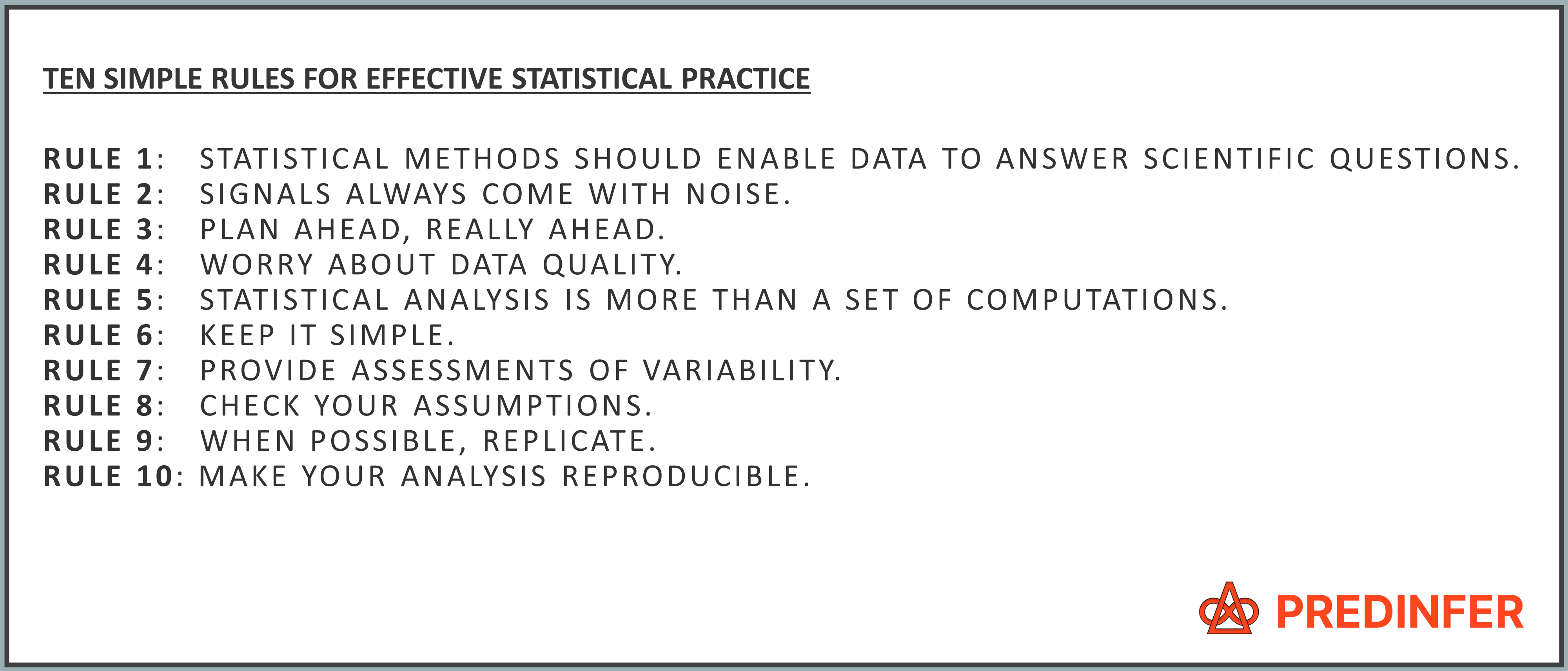March 25, 2023
2 min read
10 Simple Rules For Effective Statistical Practice
One of our goals at Predinfer is to offer broadly applicable frameworks to help you become better at Data Science. In this post, let's take a look at ten simple rules you can apply to any Data Science problem.
Summarized below is a list of ten simple rules published by a group of senior statisticians.

The nice part about these rules is the emphasis on non-technical issues which are easy to understand even for those with no formal background in statistics.
The hard part about these rules is in how to apply these "simple rules" to your use case? Well, unfortunately there are no easy answers here.
One suggestion is to keep referring to these rules before the start of every project and to share it with your team. This helps establish a common baseline and with learning, unlearning and relearning.
Another suggestion is to apply a simple technique such as Five Whys on one of the rules.
For example, let us examine Rule 2: Signals always come with noise.
Why?- Signals and noise are intertwined and are two sides of the same coin.Why?- Data is captured from the real world which is fundamentally uncertain and unpredictable.Why?- The world is a highly complex system that is prone to randomness, uncertainty and unpredictability.Why?- A complex system by definition is multivariate with many known-unknowns and unknown-unknowns.Why?- For example, with the Heisenberg uncertainty principle we know that there is fundamentally a fuzziness in nature and hence a limit to what we can know about nature.
